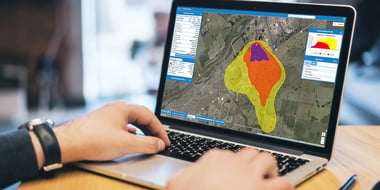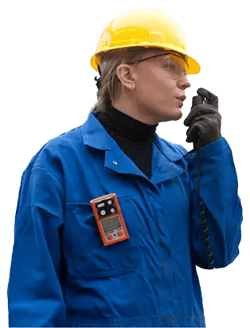Key Takeaways:
- Chemical emergencies can cause massive financial and safety consequences if you're unprepared.
- A well-equipped emergency toolkit and connected gas detection are essential for effective response.
- Following the 8 Steps to Operational Readiness ensures your team can act quickly and confidently in a crisis.
 Chemical emergencies can happen unexpectedly, even with stringent safety measures in place. And when you’re unprepared for a chemical emergency and don’t have a response plan in place, you risk hefty fees for noncompliance, environmental damage, and, most importantly, the safety of your community and workers.
Chemical emergencies can happen unexpectedly, even with stringent safety measures in place. And when you’re unprepared for a chemical emergency and don’t have a response plan in place, you risk hefty fees for noncompliance, environmental damage, and, most importantly, the safety of your community and workers.
The Cost of a Shutdown
Average lost revenue: $52,000 per hour
+
QHSE and labor: $30,000 per hour
= $330,000 in lost work hours and revenue for a 4-hour shutdown
Other Costs:
- Fines and fallout from regulatory bodies
- Losing “Social Operating License” and damaged reputation
- OSHA incidents
Don’t let your team fall victim to process and procedure flaws. With proper planning, preparation, and practice, costs can be mitigated—if not avoided altogether.
Create a Chemical Emergency Toolkit
No matter what scenario you are preparing for—derailments, chemical plant incidents, or highway spills—it is crucial to know how to build an emergency toolkit and deploy it properly to protect human life and safety.
What to include in your kit:
- Personal Protective Equipment (PPE)
- Real-Time Weather Data
- Dynamic Plume Modeling Software
- Area Monitoring
- Personal Monitoring
8 Steps to Operational Readiness
When you experience an emergency, you have to act. The 8 Steps to Operation Readiness map out exactly what to do if and when an even like this occurs. Operational readiness is a state of being that requires careful planning, training, true-to-life drills, and coordination. Don’t wait until emergency strikes—regularly review these steps so everyone involved knows their role and how to act in a real-life event:
1. Establish Site Management: Determine who is likely to be impacted and either evacuating the area or restricting access as necessary to prevent injury.
2. Identify Hazards: Review real-time and historical data to understand the current situation.
3. Evaluate Risks and Hazards: Easily share communications and updates with hazmat responders using cloud-hosted software.
4. Select Protective Equipment and Connected Gas Detection: Create a live, sensor-driven plume model without sending workers to danger zones by strategically placing area monitors around the hazard’s perimeter.
5. Coordinate Information: Give everyone who needs it regular communication into what’s happening on the ground and in the air.
6. Adjust Response with Evolving Information: With easy access to changing conditions through dynamic plume modeling software, you can continue to evolve your emergency response plan.
7.Decontaminate: Work with Hazmat and emergency crews by using sensor data and plume modeling software to rid of the hazard.
8. Terminate: Report and document the event after afterward; gas detection software that can provide reports makes this easy.
There’s so much more to creating your chemical emergency response toolkit. Download our eBook, Always Ready: Your Chemical Emergency Preparedness Guide, to dive deep into the importance of comprehensive emergency planning and connected gas detection.




